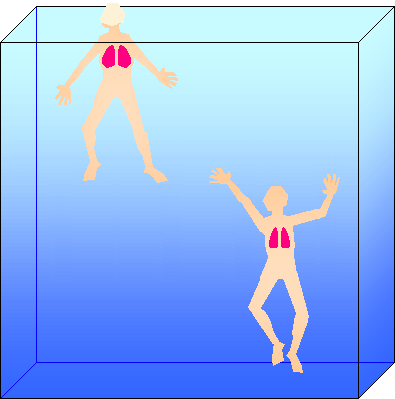Buoyancy and Diving
An object's buoyancy determines whether it floats, sinks, or hovers. As divers, we need to understand the factors that influence our own buoyancy so that we can control it while in the water. This helps us determine when to inflate or deflate the BCD, and how much weight will be required for a dive.
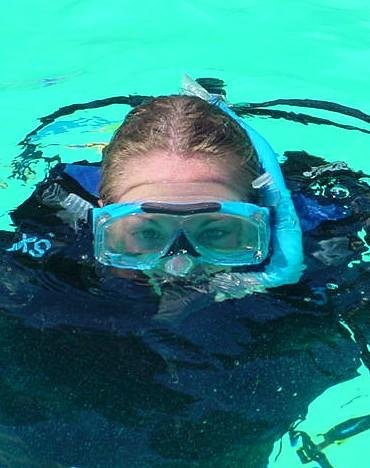
Archimedes Principle
A Greek philosopher named Archimedes studied the relationship between an object's buoyancy and the fluid it displaces. From his experiments, he concluded that "an object in a fluid is buoyed up by a force equal to the weight of the fluid it displaces." In simpler terms, this means that objects that are less dense than the fluid will float, and objects that are denser than the fluid will sink.
Imagine a bucket filled to the top with water. If you place a piece of foam on the water, a small amount will overflow from the bucket. This small amount of water weighs more than the piece of foam, which is why it floats.
Now imagine dropping a brick of lead in the bucket. The lead sinks to the bottom of the bucket and displaces more water than the foam. But this amount of water weighs less than the lead, which is why it sinks.
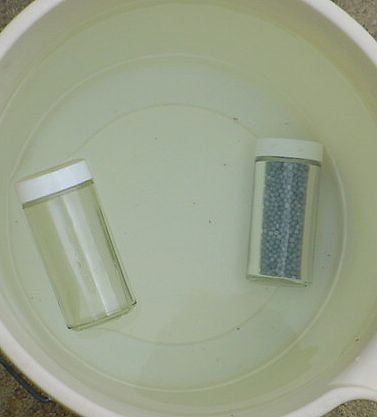
Three States of Buoyancy
The term "buoyancy" refers to the upward force placed on an object when placed in fluid. This force isn't always enough to make an object float, so there are three states of buoyancy.
- Positive Buoyancy
- Objects that are less dense than a fluid will float because they displace an amount of water that weighs more than the object.
- Negative Buoyancy
- Objects that are denser than a fluid will sink because the fluid displaced weighs less than the object.
- Neutral Buoyancy
- Neutrally buoyant objects neither float nor sink. Instead, they hover in the water. In order to be neutrally buoyant, an object must have the same density as the fluid it's placed in.
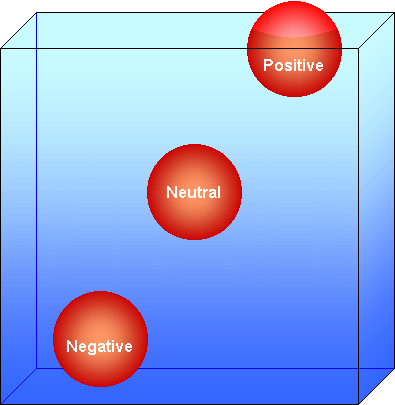
Factors Affecting a Diver's Buoyancy
Your own buoyancy is determined by the difference between the density of the water and the combined density of your body and gear. Since we want to be neutrally buoyant, our weight and volume need to be adjusted to make our density equal to the water's density. So to be neutrally buoyant in salt water, our density needs to be exactly 64 lbs/ft³, and in fresh water, it needs to be 62.4 lbs/ft³.
Buoyancy control is one of the most important skills to master. Your weight belt, BCD, exposure suit, cylinder pressure, and lungs are just a few of the factors that affect your buoyancy.
Weight and Buoyancy
In the "Diving Equipment" chapter, you learned that weights are worn to offset the buoyancy of your body and exposure suit. Lead weights are used because their density allows us to add weight without significantly increasing our volume. The following are just a few of the factors that determine the amount of weight you'll need to achieve neutral buoyancy.
- Water Density
- Salt water is denser than fresh water; so more weight is required for dives in salt water.
- Body Type and Size
- If you're overweight, you'll require more weight because fat tissues are less dense than muscle tissues. And since most bodies are naturally buoyant, larger people will require more weight than smaller people will.
- Water Temperature and Exposure Suit
- Water temperature has an indirect effect on buoyancy because you'll be wearing a thicker, more buoyant exposure suit in cold water.
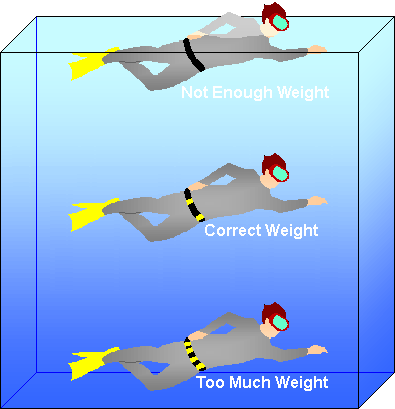
Volume and Buoyancy
You'll be wearing the amount of weight required to achieve neutral buoyancy at the surface. But as you descend, your wetsuit will compress. This decreases your volume, and results in a loss of buoyancy.
To maintain neutral buoyancy, you need to add air to your BCD as you descend. The principle behind this procedure is that as volume is lost in your wetsuit, the same amount of volume should be added to the BCD. As you continue to descend, the air in your BCD also compresses, so you'll be compensating for volume changes in the BCD as well.
You do the opposite on ascent. As you ascend, your wetsuit in addition to the air in your BCD expands, so you need to release air from your BCD to maintain neutral buoyancy. This prevents an uncontrolled ascent.
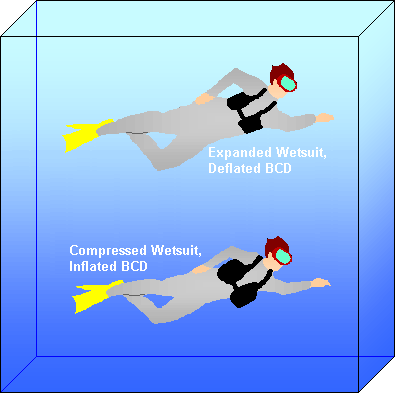
Breathing and Buoyancy
Your lungs also have an effect on your buoyancy. Most people can float comfortably at the surface with a full breath of air, but sink when they exhale. This is because your lungs produce several pounds of lift when full, and loose that lift when empty.
This affects your buoyancy as you dive. If you're neutrally buoyant, you'll rise as you inhale, and sink as you exhale. For this reason, it's important to maintain a consistent breathing pattern to balance out these shifts in buoyancy.
You can use your lungs to make temporary adjustments in buoyancy. For example, when swimming over rocks or reefs, you can take shallower breaths to compensate for wetsuit and BCD expansion until you return to your original depth.
